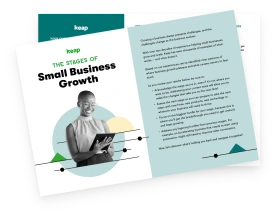The welcome email. Every email marketer should have one.
Why? Because a person is never more interested in you and your brand than when they fill in that little input form and sign up for your email list. According to Experian Marketing Services, welcome emails are four times more likely to be opened and five times more likely to have click throughs.
When your newly-minted subscriber does open and click through, you have one shot to make a good first impression. In fact, the nature of your welcome email will define the relationship for better or worse going forward…and could be the difference between an eventual sale or unsubscribe.
But here’s the kicker…the welcome email has to be good! And, unfortunately, many welcome emails are ineffective at best and super awkward at worst.
Here are seven types of welcome emails that need to stop.
The no-answer-at-all
Ok, so this isn’t even an email. It’s the absence of an email. When someone signs up to your list, do they get anything at all to welcome them? Sadly, many businesses rely on the landing page confirmation (often provided as stock copy by the email service provider) alone to tell the new subscriber they are on the list. Not only is it a huge missed opportunity, but it also communicates that you don’t really value the subscriber.
The generic email
Perhaps just as bad as not sending an email at all is sending a generic email that says something like, “Dear subscriber, We received your request to join our list. If you signed up in error, you can unsubscribe here.” This is usually sent by a DO NOT REPLY email. Talk about impersonal, cold, and unwelcoming. This communicates from the starting point that you don’t put effort into your marketing, which can easily be translated into you don’t put effort into your product or services. Plus, it does nothing to encourage next steps, set expectations, or build a relationship.
The do-all-this-work-for-me email
This is the age old bait and switch. You offer a simple sign up form like maybe a first name and an email, and then you use the welcome email to try to get as much more information as you can. The object here is to qualify leads quickly but it comes across as too needy and all about you and your needs. Rather than ask your new subscriber to do your job for you, find creative ways to progressively qualify your leads through future interactions.
The here’s-all-the-information-I-just-gave-you email
Many marketers set expectations for subscribers on a landing page of some sort so people know what they’re signing up for. If that’s the case, sending a welcome email that simply reiterates the same information already shared without providing any other value or call to action is a bit maddening for the recipient. The old adage is that you can never over communicate. That’s true to an extent, but you must also provide something new or fresh with each successive communication. Otherwise, people will stop paying attention, and that’s the death knell for email marketers.
The do-you-know-how-great-I-am email
Another common welcome email mistake is to make it all about you. This can take the form of bragging about how big your community is, the famous folks you’ve worked with, or the amazing things you’ve accomplished. If you met someone at a party that talked this way, you’d be turned off. A welcome email is just that, a welcome—an introduction. It should be about making the subscriber feel welcome, about meeting their needs, not talking about how great you are.
The late welcome email
This one is downright disconcerting. I’ve signed up for lists before and not gotten a welcome email for upwards of a week or two. Why? By the time I get the email, I’ve almost forgotten that I signed up in the first place. Frankly, it’s annoying. Worse yet, it is a huge missed opportunity for a brand. When someone signs up, they’re in the mindset to engage then, not later. Send your email right away. People get that it’s automated, but if you make it feel personal and provide value, they won’t mind.
What a good welcome email should include
So what should a good welcome email include? The formula is pretty simple: It should inform. It should engage. And it should connect…all in a timely and personalized way.
What that looks like is different for everyone, but it must do all those things to be great.
A final thought
The Keap app comes preloaded with an extensive library of flexible, functional email templates for a variety of opportunities. Check out how Keap can help you create powerful email communications.


